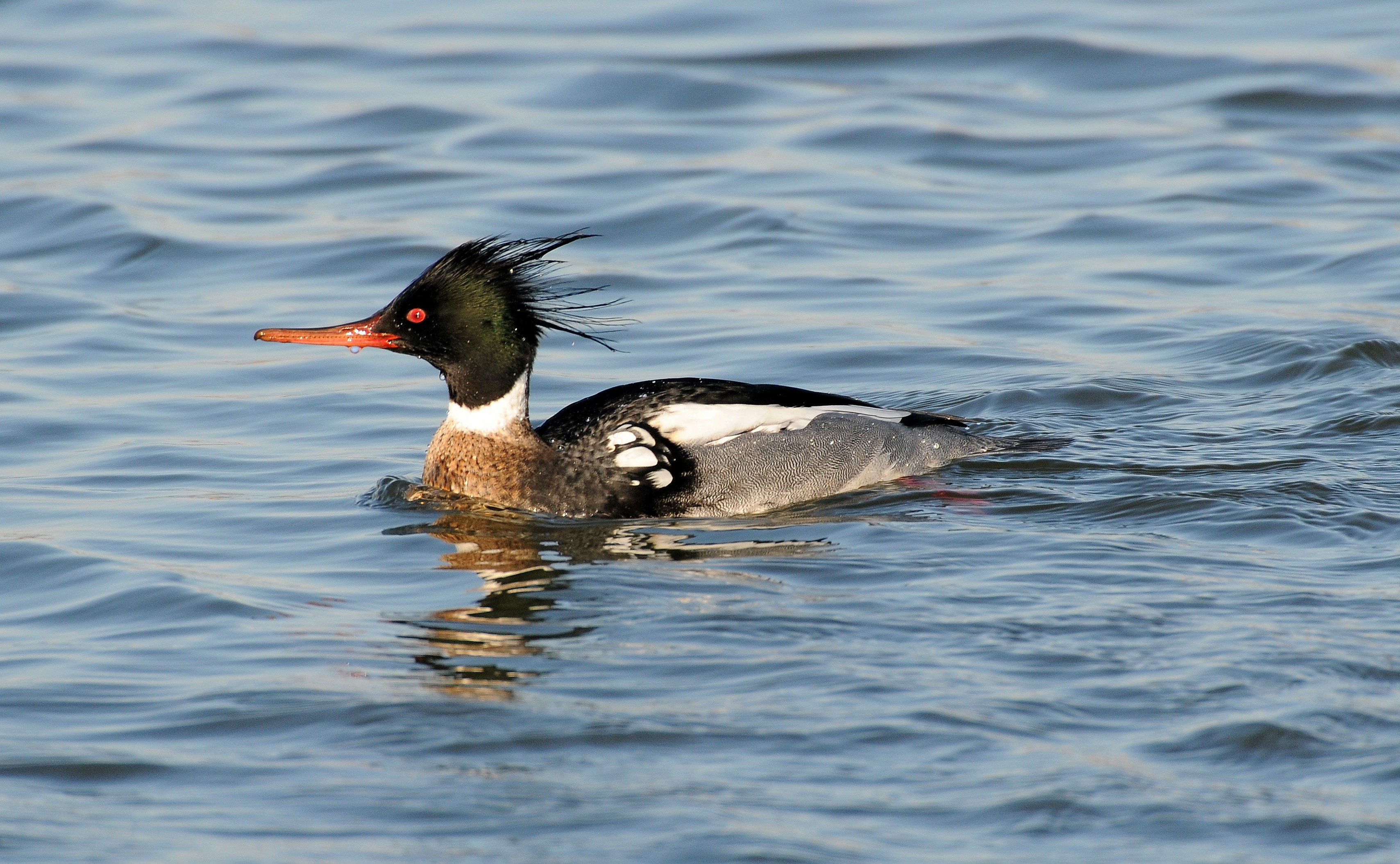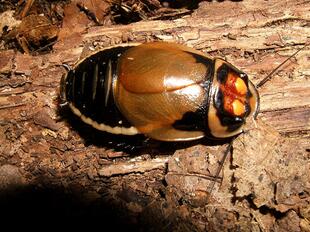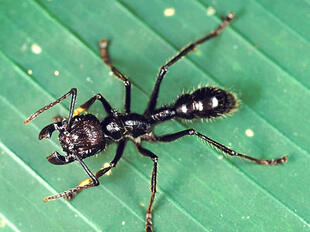
Red-breasted merganser(Mergus serrator)
Phylum —chordata
Class — aves
Order — anseriformes
Family — anatidae
Genus –mergus
Appearance
The adult red-breasted merganser is 51–62 cm (20–24 in) long with a 70–86 cm (28–34 in) wingspan. The red-breasted merganser weight ranges from 28.2-47.6 oz (800-1350 g).
It has a spiky crest and long thin red bill with serrated edges. The male has a dark head with a green sheen, a white neck with a rusty breast, a black back, and white underparts. Adult females have a rusty head and a greyish body. The juvenile is like the female, but lacks the white collar and has a smaller white wing patch.
Habitat
Red-breasted mergansers have a holarctic distribution; they are found throughout much of the northern hemisphere. Red-breasted mergansers have distinct breeding and wintering ranges, although they overlap somewhat in northern, coastal areas. In the Americas they breed from Alaska throughout northern, boreal Canada to the maritime provinces and into the northern United States: Minnesota, Wisconsin, Michigan, and Maine. They breed in Greenland and Iceland and in Eurasia from the Faroe Islands, Ireland, and Scotland through Scandinavia, northern Russia and Asia to Siberia and the Kamchatka Peninsula. They may also breed in northeastern China, northern Japan, and as far south as northern Germany, Lake Baikal, Manchuria, and the Sea of Okhotsk. Red-breasted mergansers winter in coastal areas, including the Atlantic, Pacific, Gulf of Mexico, Great Lakes coasts, and other large, inland waterways as far south as northern Mexico in the Americas and the Baltic, North, Mediterranean, Black, Caspian, and Aral Seas in Eurasia. They sometimes wander as far south as portions of the Red Sea and to the Hawaiian Islands in winter. They are found throughout the year in northern coastal areas, including Iceland, parts of the British Isles, southeastern Alaska and the Aleutian Islands, coastal areas of Maine and the Canadian maritime provinces, and the northernmost lower peninsula of Michigan and northern shore of Lake Michigan.
Behavior
Red-breasted mergansers are migratory, with distinct breeding and wintering ranges. They are active during the day and are highly aquatic. They have rapid, efficient flight and can swim and dive well by propelling themselves with their feet. They cannot walk well because their feet are so far back on the body. Red-breasted mergansers spend about 50% of their waking hours in foraging activities, although this varies with the availability of prey.
They are highly social and are typically seen in groups, with the exception of breeding season, when pairs separate to mate and nest. They migrate in small groups of 5 to 15, but in their fall migration they may gather in large groups of up to 15,000. They do not defend territories, even during the breeding season. Red-breasted mergansers also commonly associate with other birds, both in feeding and nesting areas.
Diet
Red-breasted mergansers mainly eat small fish, but also aquatic insects, crustaceans, and frogs.
Reproduction
Red-breasted mergansers are seasonally monogamous, but there is good evidence that extra-pair copulations may be frequent. Pairs may form as early as November, but most pair bonds form during spring migration, starting in March. Males use a courtship display and call to attract females.
Mated pairs arrive on the breeding grounds in May, egg-laying occurs in early June in the northernmost portions of the breeding range, with hatching in July and fledging in September to October.
Females choose nests on land close to water, usually in dense vegetation or under objects, such as driftwood or boulders. Either an object or dense tree branches or grass forms a roof over the nest. Females start the nest as a scrape, but gradually add grass and feathers as incubation progresses. They lay from 5 to 24 beige to gray eggs (mean 9.5), laying 1 egg every other day. They begin to incubate the eggs when the last egg is laid. Incubation is generally for 30 to 31 days, young hatch synchronously. Young fledge at 60 to 65 days after hatching.
Females incubate the eggs and brood and care for the young until they abandon them within a few weeks after hatching. Males abandon females on the nest soon after she begins incubating the eggs.
In captivity
The average lifespan of these birds is more than 10 years.
In captivity, it is not practically kept, usually preference is given to a common merganser, which is less whimsical and easier communicate with a human. Even in zoos, a red-breasted merganser is rarely seen.
 Russian
Russian
 English
English
























